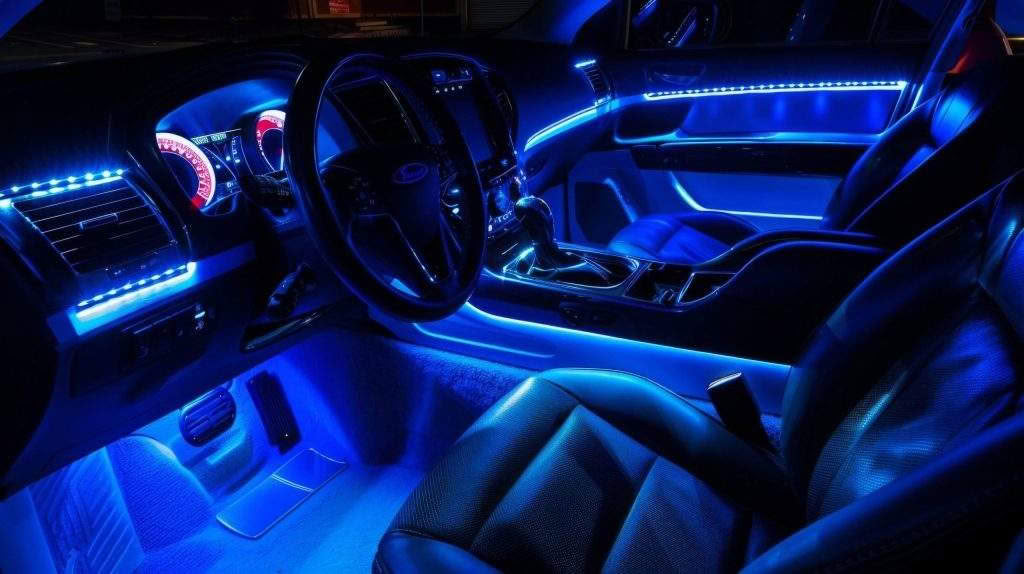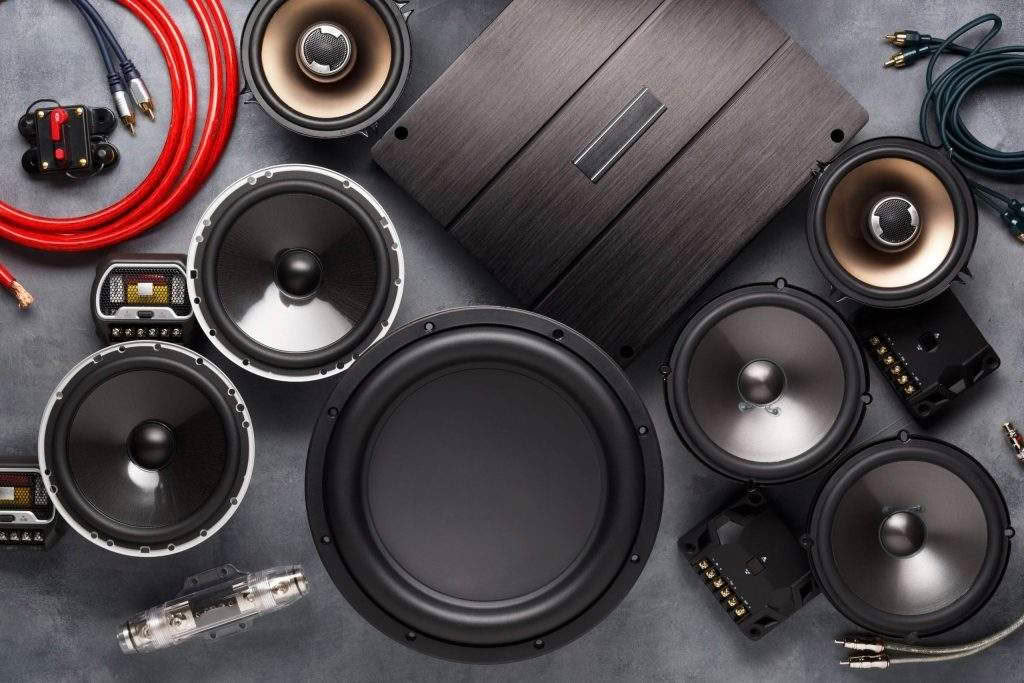How to Pick the Best Monoblock Amplifier?
Are you ready to unleash the true power of your car audio system with earth-shaking bass? Choosing the best monoblock amplifier—like an 8k rms amp, 5k amp, or even a 16k amplifier—can dramatically elevate your listening experience, but only if you match the right features, power levels, and compatibility to your unique setup. With so many amplifier options and numbers (3k, 5k, 8k, 16k) floating around, it’s easy to feel overwhelmed by wattage, RMS ratings, and tech jargon.
This comprehensive guide is designed to cut through the confusion and answer your biggest questions: Which monoblock amp suits your subwoofers? What’s the difference between an 8k amplifier and an 8k rms amp? How do you ensure you get crystal-clear, distortion-free bass while protecting your gear? Drawing on expert insights and leading products from Evolution Audio and Evolution Lithium, you’ll learn exactly how to choose a high-performance, reliable amplifier tailored to your system and goals.
Getting the best bass and clarity out of your car audio system starts with understanding what a monoblock amplifier is and why it’s the go-to choice for powerful subwoofer setups. Unlike multi-channel amps, a monoblock amplifier delivers a single channel of high-powered audio output, specializing in driving subwoofers with precision and efficiency. For those who demand ground-shaking low-end from their car audio, choosing the right amp—be it a 3k amplifier, 5k amp, 8k rms amp, or even a 16k amplifier—is foundational for sonic excellence.
Decoding Key Power Ratings
When shopping for an amp, you’ll notice ratings like peak power and RMS (root mean square) power. RMS is the industry-standard measurement and tells you the amount of continuous power the amp can deliver without distortion—making it far more relevant than peak power figures, which only measure short bursts. Here’s a practical breakdown for reference:
- 3k amp / 3k amplifier: Ideal for entry to mid-level subwoofer systems, typically delivering around 3000W RMS.
- 5k amp / 5k amplifier: Offers more muscle for larger subs or dual sub setups, with 5000W RMS.
- 8k amp / 8k rms amp / 8k amplifier: Suited for high-performance and competition builds, these deliver up to 8000W RMS reliably.
- 16k amplifier: Designed for extreme audio enthusiasts and dedicated SPL competitors; not suitable for daily drivers or basic stock setups.
Understanding Real-World Output (and Avoiding Common Pitfalls)
It’s tempting to think that more power is always better, but excessive wattage can actually damage your subs and electrical system. Always cross-reference real RMS ratings—some brands list inflated specs. Read spec sheets thoroughly, focusing on real-world power ratings at your intended impedance (e.g. 1 ohm, 2 ohms). Remember also to factor in your system’s limitations—oversized amps paired with inadequate wiring or electrical support lead to distortion or even gear failure.
Understanding these core concepts ensures you pick an amp that fits your needs rather than just chasing bigger numbers. This approach not only protects your investment but also guarantees smoother, distortion-free audio performance that lasts.
Matching Your Amp to Subwoofers and Car Audio Goals
One of the most important yet misunderstood steps in creating a world-class car audio setup is ensuring your monoblock amplifier and subwoofers are perfectly matched. Whether you’re eyeing an 8k rms amp for head-turning SPL, a versatile 5k amp for daily driving, or a robust 16k amplifier for competition-level performance, the synergy between amp and sub is essential for optimal sound quality, speaker longevity, and reliable day-to-day use.
Calculating Ideal Power and Understanding Impedance
Match RMS Ratings: Aim to pair your amp’s RMS power—such as that from a 3k amplifier or an 8k amplifier—to the RMS rating of your subwoofer(s), ensuring neither is underpowered or subjected to overload. For example, a sub rated for 2000W RMS ideally needs at least a 2000W RMS amp for clarity and punch.
Impedance Matching is Critical: Subwoofers come in different impedance ratings (typically 2 or 4 ohms), and your amp must be stable at your chosen load. For dual voice coil configurations, wiring options multiply, so ensure your 5k or 8k amp performs safely at the resultant ohm load without risk of overheating or triggering protection mode.
Multi-sub Setups: High-power amps like a 16k amplifier or multiple 8k amps are often needed for setups with several subwoofers, but always confirm the total system impedance and aggregate RMS to avoid excessive strain or sound imbalance.
Selecting your amp isn’t just about numbers. Prioritize sound clarity, accurate bass response, and dynamic headroom. Overpowering your subs may lead to distortion, while underpowering can cause clipping and damage. Practical examples: a 3k amp can be ideal for a daily setup with a single premium sub, a 5k amplifier for two matched subs, and an 8k amp for ambitious multi-sub installations. Consider your music preferences and intended volume levels—true audio enjoyment comes from nuance, not just decibels.
More Than Just Loudness: Total System Harmony
In the pursuit of bass and SPL, don’t neglect foundational factors like phase alignment, enclosure design, and the vital role of tuning. Investing in accurate RMS matching and proper impedance handling ensures your investment in an Evolution Audio system pays off in durability and audio satisfaction. Your goal: a system that’s loud, clean, and reliable, delivering consistent bass regardless of where the volume knob points.
Evaluating Essential Features in Modern Monoblock Amps
Today’s high-performance monoblock amplifiers are more than just powerhouses—they’re packed with advanced features that dramatically influence your audio experience. Choosing between a 3k amp, 5k amplifier, 8k rms amp, or a 16k amplifier from leading brands such as Evolution Audio involves more than just comparing wattage on a specification sheet. Modern amps introduce new technologies that enhance efficiency, compatibility, and user control, setting them apart from basic, outdated models.
Technological Advances to Look For
- Class D Topology: Most cutting-edge monoblock amplifiers now use Class D circuits, which greatly reduce heat output and improve efficiency. This allows for more compact designs and less strain on your vehicle’s charging system.
- Thermal Protection and Advanced Cooling: Quality amps incorporate robust heat management with enhanced heatsinks or fans—crucial for high-output units like 8k and 16k amplifiers that can generate significant warmth during extended use.
- Integrated DSP and Onboard Crossovers: Digital Signal Processing (DSP) allows for precise tuning and sound shaping, while onboard crossovers and low-pass filters let you tailor output specifically for your subwoofer.
- Remote Monitoring and Input/Output Flexibility: Features like remote bass knobs, Bluetooth app control, and multiple input options can make a big difference in how you interact with your audio system.
- Build Quality and Brand Differentiation: Brands like Evolution Audio often deliver more refined componentry, resulting in reliability and enhanced audio clarity across different power classes.
Consider, for instance, an 8k rms amp with integrated Bluetooth control and digital bass adjustment. This not only offers high power for serious SPL, but also makes daily use and system tuning dramatically simpler and more flexible. In contrast, a budget 3k amplifier might lack advanced controls or protection circuitry, which can limit long-term performance and user satisfaction.
Future-Ready Features for Ultimate Value
As car audio technology continues to evolve, emerging features such as Bluetooth app integration, digital sound shaping, and adaptive protection circuits are becoming increasingly vital for music lovers who value both performance and convenience. Investing in an amp with these forward-thinking technologies not only guarantees better sound today but also future-proofs your system for upgrades and changing preferences. Look past headline wattage and ensure your next monoblock amplifier balances raw output with innovation, protection, and user-friendly control.
Power Supply and Installation Considerations
A powerful monoblock amplifier, especially models like an 8k rms amp or a 16k amplifier, places significant demands on your car’s electrical system. Supporting your amp with the right power supply and ensuring correct installation is essential for consistent performance, system longevity, and safety. Many of the most common issues—unwanted shutdowns, protection mode triggers, or underwhelming output—are the result of inadequate power delivery or installation missteps. Addressing these core elements can help you get the most out of any amplifier you choose, from a 3k amp to a flagship model.
Building the Right Electrical Foundation
- Upgrade your battery and alternator: High-output amplifiers quickly exceed the capabilities of factory electrical systems. Consider robust lithium batteries, such as those available from Evolution Lithium, to avoid voltage drops that can damage your amp or reduce sound quality.
- Select proper wiring and fuses: Use oxygen-free copper wire of the correct gauge (often 0- or 4-gauge for 8k+ amps) to minimize resistance and maintain stable current flow. Fuses should be correctly rated for both your amp’s and wiring’s capacity.
- Grounding and installation: Ensure all grounds are secure and connected to clean, paint-free metal. A proper ground is fundamental for avoiding unwanted noise or system faults.
- Professional vs. DIY installation: While many enthusiasts enjoy tackling installs themselves, professional installation ensures compliance with safety standards, optimal routing, and precision—especially when dealing with high-output models like the 8k amplifier.
Even the best amplifier will fall short if your car’s infrastructure can’t keep up. Upgrading your “big three” (battery to chassis, chassis to engine, alternator to battery) wiring is an often-overlooked but high-impact enhancement.
Troubleshooting and Real-World Impact
A robust installation addresses common issues such as protection mode activation, audio dropouts, and overheating. If your system experiences dimming lights, clipped output, or frequent amp shutdowns, the culprit is often insufficient power delivery or poor grounding. Proactively upgrading your car’s electrical system not only prevents frustration but also maximizes the efficiency—less heat, less strain—and performance of your chosen monoblock amp.
Comparing Popular Monoblock Amps and Making Your Best Choice
With so many monoblock amplifiers on the market—ranging from powerful 3k amps to competition-grade 16k amplifiers—finding the right model can feel overwhelming. Top-ranking resources emphasize matching amplifier specs with your system, but making a truly confident choice requires a careful look at brand quality, features, reputation, and specific user needs. Leveraging the selection at Evolution Audio, you can narrow your options for the best balance of performance, size, and future-proofing.
What to Look for in Your Ideal Monoblock Amp
Consider the following checklist when comparing popular amplifiers, such as 3k, 5k, 8k, and 16k models:
- Performance and Power Ratings: Assess actual RMS output versus marketing claims and ensure compatibility with your subwoofer setup.
- Feature Set: Look for essentials like high-efficiency Class D operation, thermal protection, advanced DSP, and user-friendly onboard controls.
- Size and Installation Fitment: Make sure the amp’s physical dimensions suit your vehicle, especially in space-limited builds.
- Brand Reputation and Support: Choose brands—like those curated by Evolution Audio—known for reliability, customer service, and warranties.
- Warranty and Expandability: Evaluate warranty coverage and consider whether the amp allows easy upgrades (e.g., adding extra subs or integrating new tech).
Beyond these points, think about overlooked factors such as the user interface (are controls easy to access?), amplifier cooling (does it reduce strain on your car’s power supply?), and efficiency (especially in daily-driver vehicles where heat and consumption matter). Select an amp that isn’t just powerful for today, but flexible enough for tomorrow’s audio ambitions.
Choosing the Right Class for Your Audio Ambitions
The best monoblock amp for you depends on your profile. Daily drivers often benefit from a reliable 3k amplifier with top-line efficiency and quiet operation. Bassheads and competitors may look to heavy-hitting 8k or 16k options, focusing on build quality and advanced signal customization. For audiophile systems, prioritize amps with lowest distortion and superior DSP tuning—even if headline wattage is less.
Ultimately, the most satisfying purchase comes from honestly evaluating your audio needs and environment. Use these criteria, compare the full amp lineup via Evolution Audio, and you’ll invest in a monoblock amplifier that delivers crystal-clear, reliable bass for years to come.
Frequently Asked Questions
Q: What is the most important thing to know about picking the best monoblock amplifier?
A: The most important factor is aligning the RMS power and impedance of your monoblock amplifier with your subwoofer’s ratings. This ensures you achieve optimal bass performance without risking distortion or damage to your audio equipment. Always prioritize Real World RMS ratings over inflated peak numbers, and remember that using an amp with much higher output than your sub can handle is just as problematic as using one that’s underpowered. Focusing on this match, along with reputable brands like Evolution Audio, sets the foundation for a high-performing, reliable system.
Q: How do I determine the right amp size (3k, 5k, 8k, 16k) for my vehicle and goals?
A: Start by identifying the RMS power your subwoofer (or subwoofers) can handle, then choose an amplifier that matches or slightly exceeds this rating. For most daily drivers and moderate builds, a 3k or 5k amp is sufficient. If you’re aiming for competition-level sound or have multiple high-power subs, consider an 8k rms amp or even a 16k amplifier. Always factor in the total power needs and ensure your vehicle’s electrical system (battery, alternator, wiring) is upgraded to handle the increased demand.
Q: What are the most common mistakes when selecting and installing a monoblock amplifier?
A: Common mistakes include mismatching amp and subwoofer RMS ratings, neglecting the impact of subwoofer impedance, and underestimating the necessary upgrades to your car’s electrical system. Many users also overlook important features like thermal protection, remote monitoring, and input/output flexibility. Poor installation—such as incorrect wiring gauges, improper grounding, or insufficient fuse sizing—can lead to frequent amplifier shutdowns or damage.
Q: Which features should I look for in a modern monoblock amplifier for the best user experience?
A: Key features to consider include Class D topology for efficiency, integrated DSP for custom sound shaping, onboard crossovers and filters, thermal and overload protection, and robust build quality. Advanced options like Bluetooth app control, easy-to-use remote controls, and digital status displays further enhance usability—especially in high-powered models like 8k and 16k amplifiers. Review offerings from trusted sources like Evolution Audio for models that include these features.
Q: How can I ensure my amp installation is safe and reliable?
A: Invest in a professional installation, especially for high-power amps, or ensure you follow best practices with DIY installation: use the proper gauge wiring, high-quality connectors, correct fuse sizing, and secure grounding points. Confirm that your vehicle has a sufficient alternator and battery setup—consider specialized lithium solutions for amps 5k and above. Double-check all polarity markings, connections, and settings before powering up to minimize the risk of issues.
Q: Is it possible to upgrade my current system to a more powerful amp, or should I start from scratch?
A: Upgrading is possible, but it’s essential to assess the compatibility of your existing subs, wiring, and electrical system. You may need heavier-gauge cables, stronger battery support, and improved cooling or mounting locations. Carefully plan out each step, and consult with experts or retailers like Evolution Audio for personalized upgrade advice.
Q: What’s the fastest way to get started with the right monoblock amplifier?
A: Begin by listing your current audio equipment specs—especially subwoofer RMS and impedance. Compare options at reputable retailers that provide transparent specs and expert guidance, like the Evolution Lithium amplifier shop. Use their support resources or reach out for personalized recommendations, and always map out installation considerations (power, space, wiring) before making your purchase.
Unlock Superior Bass Performance with the Right Monoblock Amplifier
Choosing the best monoblock amplifier is about far more than just chasing after the biggest numbers. By understanding RMS and peak power, matching your amp to your subwoofers, considering impedance and installation, and evaluating advanced features like Class D technology and DSP, you’ll ensure lasting sound quality and system reliability. Whether you’re looking at a 3k amp, 5k amplifier, 8k rms amp, or a high-powered 16k amplifier, the key is to focus on synergy between your amp, subs, and the rest of your car’s audio system.
Now is the perfect time to take the next step on your audio journey. Don’t settle for guesswork—use the checklists and insights provided, and explore trusted options through reputable suppliers like Evolution Audio. With the right monoblock amplifier, you can unlock deep, precise bass and truly elevate your car audio experience for years to come.



